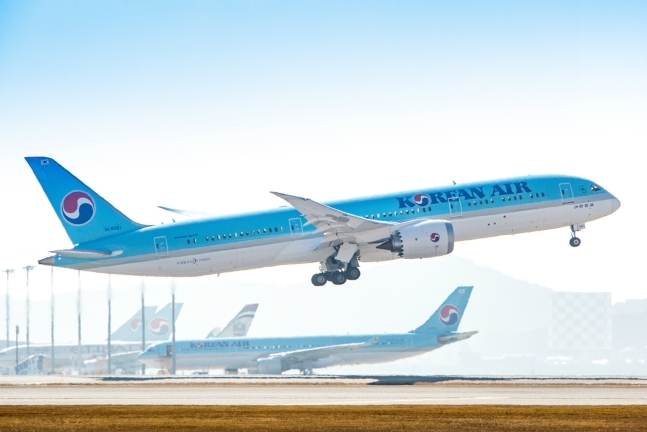
[ad_1]

Asiana Airlines’ creditors are considering selling Asiana to Korean Air (Hanjin Group).
It is an analysis that the experience of causing the collapse of the shipping industry due to a merger with Hyundai Merchant Marine when the former Hanjin Shipping was brought into bankruptcy has become a contradictory teacher.
In particular, it appears the government is considering a reorganization of the aviation sector as it may be in danger of not being able to recover the infrastructure sector if the first and second largest airline collapse.
Hanjin Group is known to have been conservative regarding the review of the big deal focused on creditors, but is known to be repeatedly contemplating internally because there is a possibility that favorable trading conditions may emerge.
According to industry and news 1 of 14, Korean Air and Asiana operate 173 and 86 fleets respectively. If the two companies merge, they will become the world’s top 10 airlines operating arithmetically with 260 air units.
Given the economies of scale, the scenario in which Korean Air and Asiana combine is not bad. In fact, in the United States, several airlines formed a competitive landscape until the 1990s, but it was to some extent split into the Big Three system (United, American Airlines, Delta Airlines) through consolidation.
Europe also increased economies of scale with the merger of airlines around 2010. British Airways and Iberia Airlines (2010) formed an IAG holding through a merger and converted into a subsidiary of the company. Air France also merged with KLM of the Netherlands in 2004.
While there are differences in the financial situation and management system, it can be expected to improve competitiveness through the realization of economies of scale, such as streamlining routes, reducing branch operating costs, and efficient maintenance and management. Creditors appear to be considering the Hanjin Group’s acquisition of Asiana under a single roof, or holding system.
Within Korean Air it is rumored that it is difficult to take over Asiana given the corporate situation, such as the decrease in international passengers, but there is no reason to refuse if creditors’ financing is pressed.
The scenario discussed in the market involves the use of 800 billion won in Asiana permanent bonds held by the Korea Development Bank.
Currently, the Korea Development Bank does not have a stake in Asiana, but if the full 800 billion won in permanent bonds is converted into shares, it will secure a stake of approximately 37%.
In this big deal, the Korea Development Bank is considering investing these shares in kind for Hanjin Kal, etc. And to receive shares like Hanjin Kal in exchange for becoming a major shareholder.
In the case of Kumho Industrial’s Asiana holdings (30.77%), if KDB invests funds in Hanjin Kal and others through a paid capital increase assigned to a third party, Hanjin Kal and others should take over Asiana Airlines’ stake.
In this case, Hanjin Group can put Asiana under its subsidiary without heavy financial burden.
Above all, the market pays attention to the fact that if the Asiana acquisition is accomplished through the backing of creditors, the tripartite alliance of former vice presidents of KCGI, Peninsula and Hyeon-ah Cho can escape the threat of management rights.
When Asiana’s creditors participate in Hanjin Kal’s capital increase and support the funds, they will inevitably have voting rights for the holding company. For Asiana creditors who participated in the reorganization of the first and second airline, it is important to stabilize the management system.
If Asiana’s creditors, who hold a stake in the holding, start defending themselves against the threat of management rights, the tripartite alliance will inevitably restrict the scope of its operations. This is why KCGI immediately denied Asiana’s creditors review on the Korean Air and Asiana agreements.
However, it is worrying that achieving economies of scale through such a method could have the side effect of the route monopoly. It cannot be ruled out that the Fair Trade Commission, which examines business combinations, may block it.
An industry insider said, “There are a lot of tasks to solve, but it appears that Korean Air’s acquisition of Asiana as a teacher in Hanjin Shipping’s old predicament is the best way to save airlines # 1 and # 1. . 2 of the country “.
Reporter Kim Hyun-joo [email protected]
Photos = News 1
[ⓒ 세계일보 & Segye.com, 무단전재 및 재배포 금지] .
[ad_2]
Source link